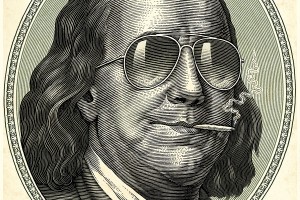Numbers Games
According to this morning’s Globe, when Governor Deval Patrick’s casino legislation is introduced in the House today, it will include some fairly eye popping numbers. Patrick is envisioning a $2 billion bump in economic activity, including $400 million extra flowing annually to the state, as well as the creation of 20,000 new jobs.
Figures that gaudy are meant to soften the most ardent anti-casino advocate, but according to the authors of a 2005 study on casino gambling in Massachusetts, we might want to pass on the Casino Kool-Aid for now. “Highly speculative and overly optimistic,” is how Phineas Baxandall, one of the authors, labeled Patrick’s estimates.
Baxandall and his colleague Bruce Sacerdote produced the study, entitled “The Casino Gamble in Massachusetts” for Harvard’s Rappaport Institute. In it, Baxandall and Sacerdote examined conditions in counties before, and after, casinos opened, and found that they are neither economic silver bullets, nor are they the scourge of society.
“Our study suggested that there were not significant benefits in terms of employment or finances that you could detect,” Baxandall said. In the words of Sacerdote: “Yes it’s money, but it’s not the be all, and end all of money.”
One of the reasons we shouldn’t expect “the be all, and end all,” is that casino openings are inevitably accompanied by population growth.
Sacerdote said that we, “might be talking about 20,000 [extra] jobs” in the state as a result of casinos. That’s the exact same number Patrick reportedly projects in his legislation, but because Sacerdote and Baxandall believe the population hike will accompany the influx of jobs, Bay Staters may not necessarily benefit.
“You have more people chasing more jobs, but the availability of jobs was not improved,” Baxandall said.
Apply the same reasoning to revenue. Put aside the finding that Baxandall and Sacerdote failed to see significant government revenue bumps from casinos for a moment. Even if the state does take in more money, there would be more of citizens to spend it on, making the increased revenue negligible.
They also found that the social ills brought on by casino gambling are far less drastic than some advocates might have you believe. Casinos, they found, often led to a “modest” uptick in personal bankruptcies (from about 2.98 bankruptcies per 1,000 residents to 3.27 bankruptcies per 1,000). As for crime, they say absolute crime numbers increase, but per capita crimes tends to go down. Fears of debilitating casino-fueled crime waves, they say, are unfounded.
The Rappaport study has received relatively little attention in the last few months–the authors suppose their relatively neutral findings are the reason–but the study did gain mention in a recent Weekly Dig story, by Julia Reichsel and Paul McMorrow. The story called into question the sources Patrick used to work out his economic projections, alleging that he could have been heavily influenced by pro-gambling interests.
The Dig piece, combined with the Rappaport Institute report, raises the question of whether there’s fuzzy economic math going on in the State House. But going by Baxandall and Sacerdote’s findings, it might not even be such a big deal whether casinos come or not.
“It’s really up to the voters,” Sacerdote said, alluding to previous reports that towns would be granted referendums on whether or not to allow casinos. “And I think they should realize they’re not getting a panacea for budget problems, but they’re not getting prostitution and violent crime on their doorstep either.”

